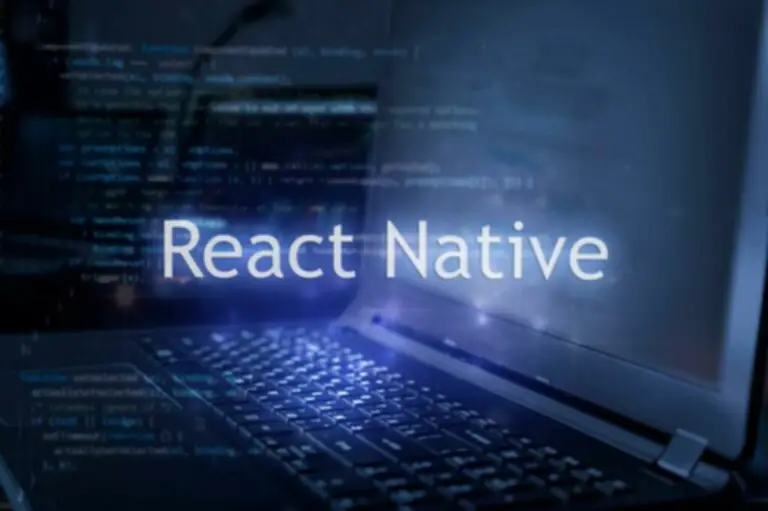React Native vs. Flutter: Overview of Technology

With the growing popularity of mobile applications, their development requires less time-consuming and simpler processes. In 2022 among the frameworks used in mobile apps development, there are two absolute leaders: Flutter and React Native. More than two million developers use them to create cross-platform applications in different spheres. Both of them allow to make Android, iOS, and web applications, but each framework is based on a different programming language and has unique features.
It is expected that with the framework’s popularity growth, users divide into two camps: those who like Flutter and those who prefer to use React Native. Keep reading the overview to discover the difference between Flutter and React Native and what to choose in 2022?
Cross-Platform vs. Native Development
When a company is faced with the task of mobile application development there are several ways: native, cross-platform or hybrid development. The choice depends on:
- required functionality;
- budget;
- development time;
- target audience.
The cross-platform approach allows you to create applications for different platforms (e.x. Android and iOS) with a single code base. It saves time and money and eliminates unnecessary effort. But pay attention, complicated cross-platform applications are not as flexible as native ones. It is difficult to implement all the features to make them work well on different devices. Also, app stores have their own requirements, which need to be considered when developing. This creates additional difficulties.
If you have enough time and financing, you can use native development. The native solution involves apps developing in the native programming language. For Android, it is used Java and Objective-C or Swift for iOS. The development of native applications has several advantages:
- allows unlimited configuration of the interface.
- provides access to all functions of the OS.
- prevents any performance problems.
As for disadvantages, if you want to cover both types of users, you will have to create two separate apps that require more time, money, and effort.
What approach to choosing depends on the project task. Continue reading to learn about cross-platform framework features and React Native vs. Flutter differences.

We are confident that we have what it takes to help you get your platform from the idea throughout design and development phases, all the way to successful deployment in a production environment!
What Is React Native
React Native is a javascript-based framework launched by Facebook in 2015. It is used for iOS and Android applications development. It allows the creation of both app types using one programming language — javascript, while the creation of native applications will require investment in the development of different languages (Swift, Java, or Kotlin). General code minimizes the number of bugs during development (the code volume will be almost two times smaller) and greatly simplifies the support of the product in the future.
Compared with Cordova or Ionic, React Native uses native API but does not simulate a browser environment. RN uses a popular JavaScript library. A framework is written with a mixture of JavaScript and JXL. Also, it uses a special markup code similar to XML. The framework interacts with both JavaScript-based threads and existing native application threads with the help of a bridge.
Of course, you know React Native created apps and can imagine the abilities. These are Skype, Tesla, Uber Eats, FB, Instagram, Pinterest, etc.
Pros and cons
An analysis of the ups and downs of the framework will provide a deeper understanding of its potential. What are the React Native pros:
- High development speed and low cost. You don’t need to hire two different developers for Android and iOS. One framework is a solution for two platforms.
- RN is written on globally known Javascript, so it is not a problem to find talents.
- Native UI. The main feature of RN is using native components. Even developers can not distinguish RN apps from native.
- The performance of the created apps is on par with native iOS/Android applications due to their API.
- Debugging is a long process, but hot reloading can help and simplify the task. This feature allows specialists to see how the code changes affect the app while it’s running immediately. Hot reloading saves developers time and effort.
React Native has some specific features that can be seen as cons. Let’s look at them:
- The framework depends on FB. This means, if one day Facebook decides to stop React Native support, all work will fall. Now it is highly unlikely, but who knows?
- Bidirectional communication through the “bridge” in some cases may reduce the performance. So if your app has many complex interactions, the performance can be significantly lower.
- The lack of third-party components in case of issues can complicate solutions. React Native is developing now and hasn’t such a significant community as Android or iOS, with APIs and third-party libraries.
- Lagging behind innovation slows down app development. The scale of RN work lags behind Google or Apple. So when they release updates or run new options, you will either have to use native bridges or wait for the frame developers to release the update.
The framework review showed that the choice of millions of developers is sound. Using RN allows you to quickly create cross-platform applications at a lower cost than native development.
Is React Native Good for Apps Development?
According to Statistica.com among the top 500 USA apps, nearly 14.9% of installed applications were built with React Native. It is a good result for a framework that is under development. Now the development team regularly releases updates and quickly solves emerging problems.
The use of RN is advantageous for start-ups and small companies with low budgets that can not afford to develop full-fledged native applications. In addition, finding developers who write on javascript and can easily master the framework will not cause difficulties.

What Is Flutter
Flutter is an open-source Google corporation Software Development Kit. It is written on Dart. The kit has everything you need to create a cross-platform application. It consists of: the Dart platform, mainly on C++ based Flutter engine, Flutter DevTools (widgets sets and development tools), testing and API tools, and Foundation library.
Having a high-performance rendering engine makes your created app cross-platform without changing the user interface. It uses skia to render and offers cross-platform integration to the next level to help the user use the app without problems on any platform.
When designing Flutter applications, widgets are used for any graphics, such as text or animations. The simpler ones are combined into complex ones. For Google-style developers use Material Design widgets, and for Apple-style — Cupertino. It is also possible to directly call the Foundation’s canoeing methods without using widgets.
The official website provides step-by-step instructions, tutorials, videos, and examples to help new Flutter users.
Flutter Pros and Cons
Growing popularity among developers and positive reviews indicate a comfortable and powerful framework. According to users reviews, Flutter has several advantages:
- Dart language is a convenient language with powerful syntax to create ideal app architecture and design. It also is characterized by durability and ease of maintenance compared to other cross-platform development tools.
- Thanks to the hot reboot usage, developers can change the source code immediately in a running application without restarting it.
- Fast and efficiently developing and less testing process provides time and money economy.
- Powerful engine.
- The kit has ready-designed and custom widgets to create an excellent app interface.
- The community using Flutter is growing rapidly.
- Well-structured and rich documentation.
List of pros is impressive, but some shortcomings can significantly affect the project:
- Apps made with Flutter are not native.
- Large file sizes. The memory of mobile devices is limited. To prevent smartphone owners from choosing which photos or music to remove to make room, some developers may opt for a different framework.
- Flutter still has a limited set of tools and lacks third-party libraries compared to native apps.
- For some developers, the Dart language is not as good as Java or C#.
Despite all disadvantages, the young kit is in the active development stage and maybe soon all problems will be solved.
Is Flutter Good for Apps Development?
After analyzing the advantages and disadvantages of the framework, one can conclude that Flutter has much more highs than lows for business and individual developers.
Using Flutter, you can create beautiful, high-performance, and amazing cross-platform mobile applications that meet all the individual needs and requirements of the projects. Flutter can be used for iOS and Android development. It is more cost-effective to hire a Flutter developer than pay two native app developers.
React Native vs.Flutter: What to choose?
As you can see, React Native and Flutter have advantages and disadvantages. The popularity of both frameworks is rising, so what to choose in 2022? Look at the comparison table, which will help you to decide.
React Native
Flutter
What is it?
Framework
Software development kit
Created by
Popularity
42% of users
39% of users
Market share in 2021
3.66%
1.45%
Free
Yes
Yes
Programming language
Javascript
Dart
Ability to share the code
Yes
Yes
Hot reload option
Yes
Yes
Native performance
Good
Better
Ui and graphics
Strong
Strong
Time to market
Faster than native apps
Faster than React Native
Engineering cost
Best
Better
Despite the React Native vs. Flutter opposition, both are popular tools. The power of both frameworks is sufficient for the development of almost any app, thanks to strong Ui and graphic widgets. But when it comes to finding developers, React Native has an advantage. But because of Google support, Flutter’s documentation is better. RN requires finding and connecting to third libraries.
Wrapping Up
Comparing Flutter and RN, it is worth noting that they are market leaders with a large audience of users. Both competitors allow the creation of high-quality and high-performance cross-platform applications, but each has specific features. Free base makes them attractive and accessible to a wide range of developers
Both frameworks allow you to use one code for different OS. The main difference lies in the working principle, program language, and engine. Their applications are world-known (Skype by React Native or eBay by Flutter) and received high user ratings. It is up to you to choose the framework for the project.
Top Articles
Container vs VM (Virtual Machines): How Do They Differ?
I am here to help you!
Explore the possibility to hire a dedicated R&D team that helps your company to scale product development.






